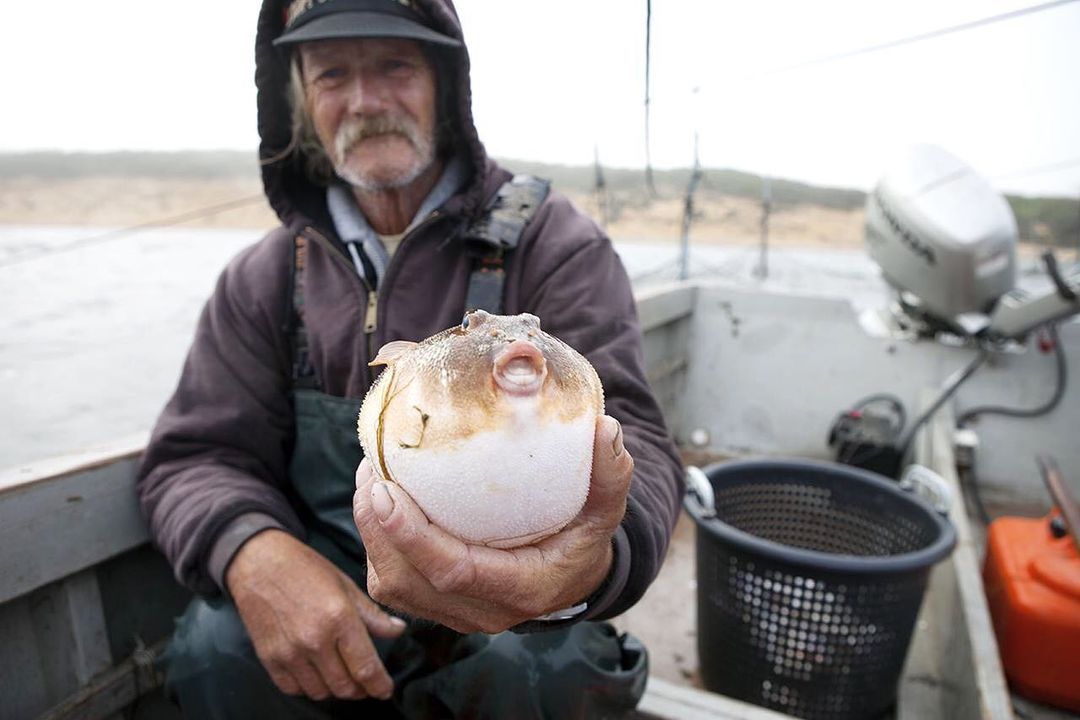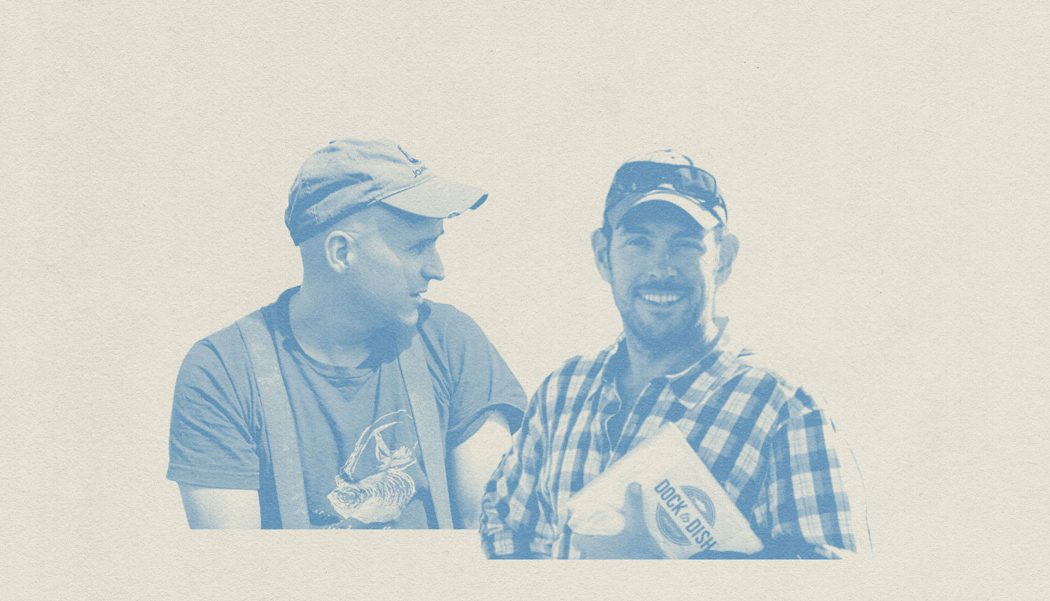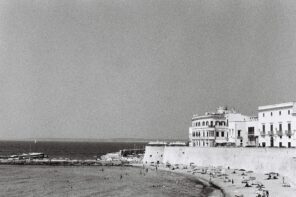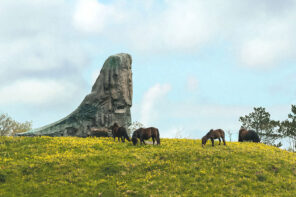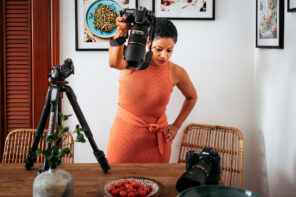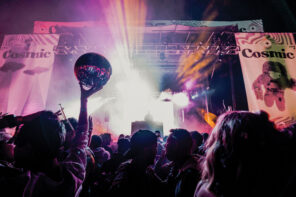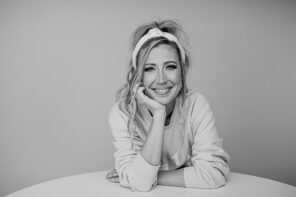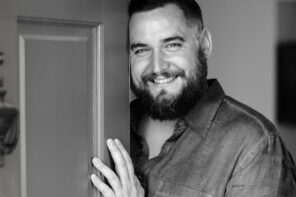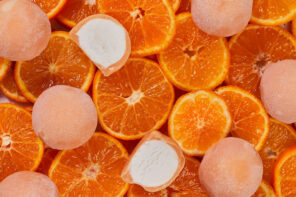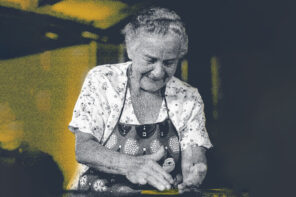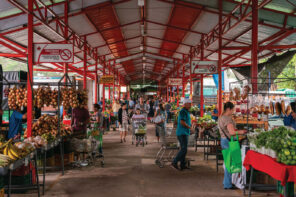Restorative ocean farmer Bren Smith talks with Dock To Dish & Eat More Kelp founder Sean Barrett about the ocean and the future of food.
@greenwaveorg x @docktodish
Bren Smith wasn’t always a restorative ocean farmer. He made the switch gradually from being a commercial fisherman and then a shellfish farmer. But now he’s a pioneer in restorative kelp farms, founding GreenWave and working with the likes of Patagonia to help others set up their own. His relationship with Sean Barrett, founder of Dock to Dish and now Eat More Kelp, goes way back, and could sometimes be contentious, but the two manage to get back to common ground (or water)—which they have a great deal of—at the bar at Blue Hill at Stone Barns.
“I burn a bridge with somebody every time I open my mouth and there’s no stopping that,” Bren told Sean as they started talking for this interview, acknowledging that both of them can share some unvarnished views, which they do here.
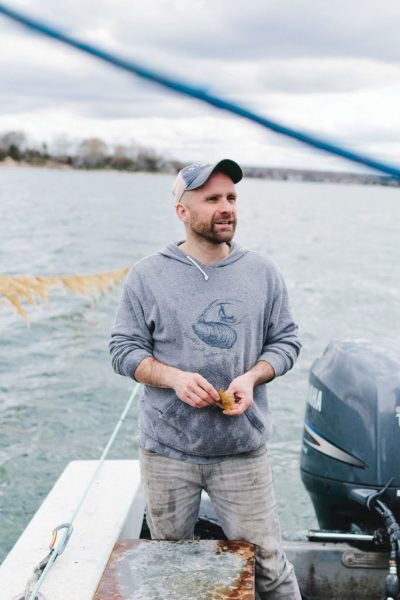
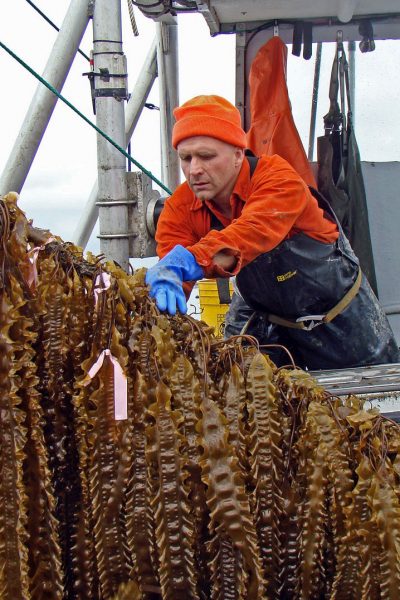
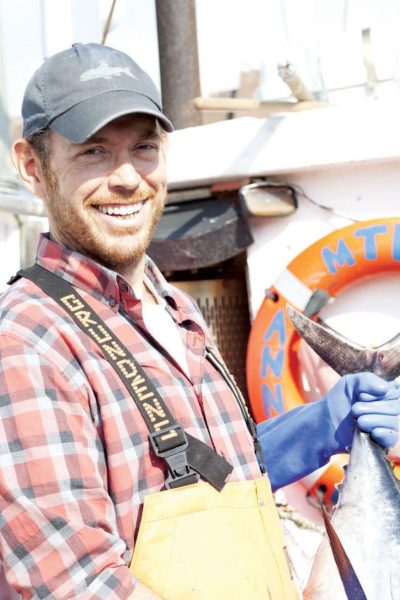
Bren Smith: You’re one of the real founders of the Community Supported Fisheries movement in the US that just became such a key lifeline for fishermen—even me. That’s how I got started in all this. I got wiped out by a hurricane and the CSF is what saved me. So you’ve just been a leader in that so long—what are the origins?
Sean Barrett: I didn’t invent them, and neither did you. The original blueprint for Community Supported Fisheries was born out of desperation in Port Clyde, Maine, in about 2008 or 2009. Ultimately, we were really just following in the footprints of the agricultural folks.
The Farm to Table movement—and the whole concept of a localized food system—was probably 20 to 30 years old and we had a lot of trailblazers who made it very easy for us to follow. I remember being kind of like almost annoyed into action and taking the first steps forward to create New York’s Community Supported Fishery in Montauk in 2012. We were just so tired of hearing, “How come no one’s doing what the farmers are doing with vegetables and produce, how come no one’s doing that for fish and seafood?”
And there were these glaring humongous issues and problems that we would see from the seafood market. Growing up, we saw the seafood market transform from the ‘80s and ‘90s to 2010, if you look statistically, the import rates for seafood just skyrocketed, and suddenly like 90% of seafood in the US was being imported.
The story of Dock to Dish is a Tale of Two Hills. The eastern end of Long Island in Amagansett has the oldest Community Supported Agriculture program in the country and was started by a guy named Scott Chaskey, who’s kind of a local legend. He’s a farmer-poet. The East End of Long Island had been inculcated with Community Supported Agriculture. Scott Chaskey’s farm is Quail Hill Farm.
I’ll never forget meeting him there and him walking me through the mechanics of the CSA and I asked him, “Could we apply this CSA format to local seafood and fisheries?” And I had half a dozen of my good friends who were commercial fishermen and I saw all the pieces and that it would be easy to connect. And then it kind of was serendipity from there. We launched a little pilot program, and it took off like a rocket ship.
The other hill in the Tale of Two Hills was Blue Hill. Dan and Dave Barber—for years, we had been watching and studying their work and were totally in awe in a lot of ways, just with a lot of the thinking and the philosophies that Dan was putting forward. Dock to Dish really was a translation of the work of Blue Hill and Quail Hill, almost verbatim: Farm to Table became Dock to Dish, Community Supported Agriculture became Community Supported Fishery. Know Your Farmer became Know Your Fisherman.
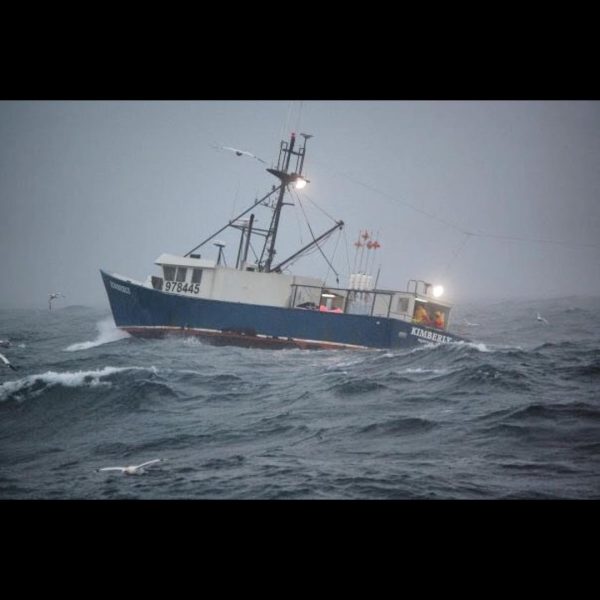
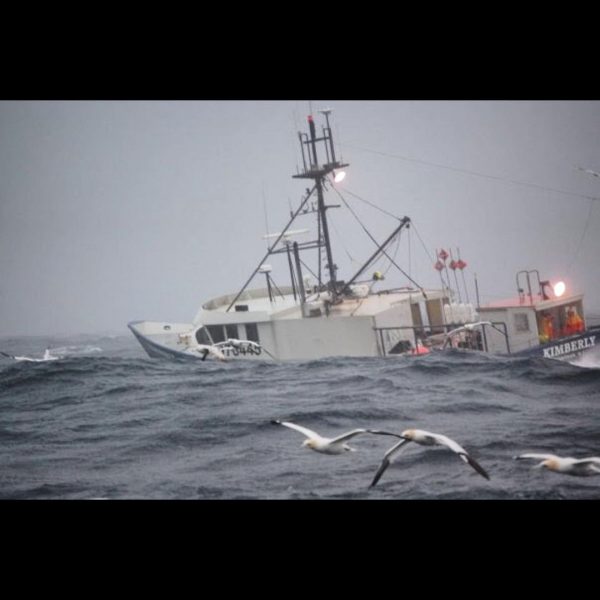

Bren: I did the CSF because, for shellfish, originally what attracted me to it… look, fishermen have to spend so much money at the beginning of the year. And then go into debt and then hope to pay that back by the end of the year. That’s the cycle. So you usually have to take a bank loan out in order to buy your seed and fix up your boat, whatever. And then you’re just hoping you’re going to make it so that you can pay it back. And that ability of the CSF to fund all my seed purchasing was huge. I could buy all my oyster seed, just because the CSF money came in the front of the year.
Why do you think the seafood sector, the ocean sector, is always so behind on the curve compared to land-based stuff ? All I do is steal shit from land, too. But why are we 20 years behind all of them?
Sean: I think you would have to take a deeper look back into history. The big dark ocean has historically been an enemy to mankind. People went to sea and got lost. The sea just swallowed people up. If you go back only 100 or 150 years, people believed in sea monsters. So the ocean is this big, dark, unknown abyss that I think humans are almost intrinsically, inherently afraid of. And rightly so. I mean I’ve had instances and I’m sure you have, too, and all of us know someone who’s been lost at sea or has drowned.
Bren: Yes.
Sean: There are some very primal dangers involved with the sea and the ocean. And it’s wild. I always ground people back in that four-letter word—which as a society and a culture, we’re just so separated from, but the word “wild.” What that really means. And Scott Chaskey, he uses it, too. There’s a poem in his book: “Across the ocean, wild and wide.” And that word “wild,” if you apply all the other elements of our food system, especially historically up until your work really, it’s only been proteins from the sea, right? So fish and shellfish. In the US anyway.
Dan Barber did a really good job of explaining that to me, where he’s like, “You know, the US really has four proteins on the plate.” Four categories: In the beef category, it’s only bovine. There’s only cow in there. In the pork category, there’s only swine and pig in there. In the poultry category, you’ve got a little more diversity, there’s turkey, chicken, maybe some duck, maybe some exotic folks can get their hands on pheasant or things like that.
But when you look at category four, seafood, now you’ve got probably over 3,500 different species of wild fish that are in that category, just in a huge constellation.
I think collectively, putting all those things together, those are things that contribute to why seafood is so far behind land as far as progress.
Bren: I’ve been looking for an answer for so long and you just answered it for me. It’s that we were allowed to be hunter-gatherers and live in a wild space longer than anybody on land. Land folks had to switch to agriculture and they just started that process way earlier and got very creative through many years, and we’ve had the luxury of being in a wild space forever.
The fish are still there and the ocean still is wild and wide. It’s that we’ve been able to exist much longer than folks on land in protecting resources and fish. Because we fished sustainably, what into the ’50s probably, right?
But this goes to climate. Seas are rising and the whole thing is: build seawalls or run away. Like, flee the coasts. Are we just going to remain afraid of the sea? “It’s an abyss, a place people get lost.” Or is it going to be, we’re going to have some different relationship to it, because we’re going to need to get more food from the sea? So is that fear going to fade? Climate change is making the ocean, once again, really scary because it’s attacking our coasts.
Sean: Could there be a more horrifying nightmare? You see that literally in movies, huge tsunami waves and tidal waves coming and hitting New York and things like that. On a very visceral level, it’s horrifying to think about. Does that fear motivate change or action? I would like to think so.
If we just find a place to sustain the track that we’re currently on, we’re doomed.
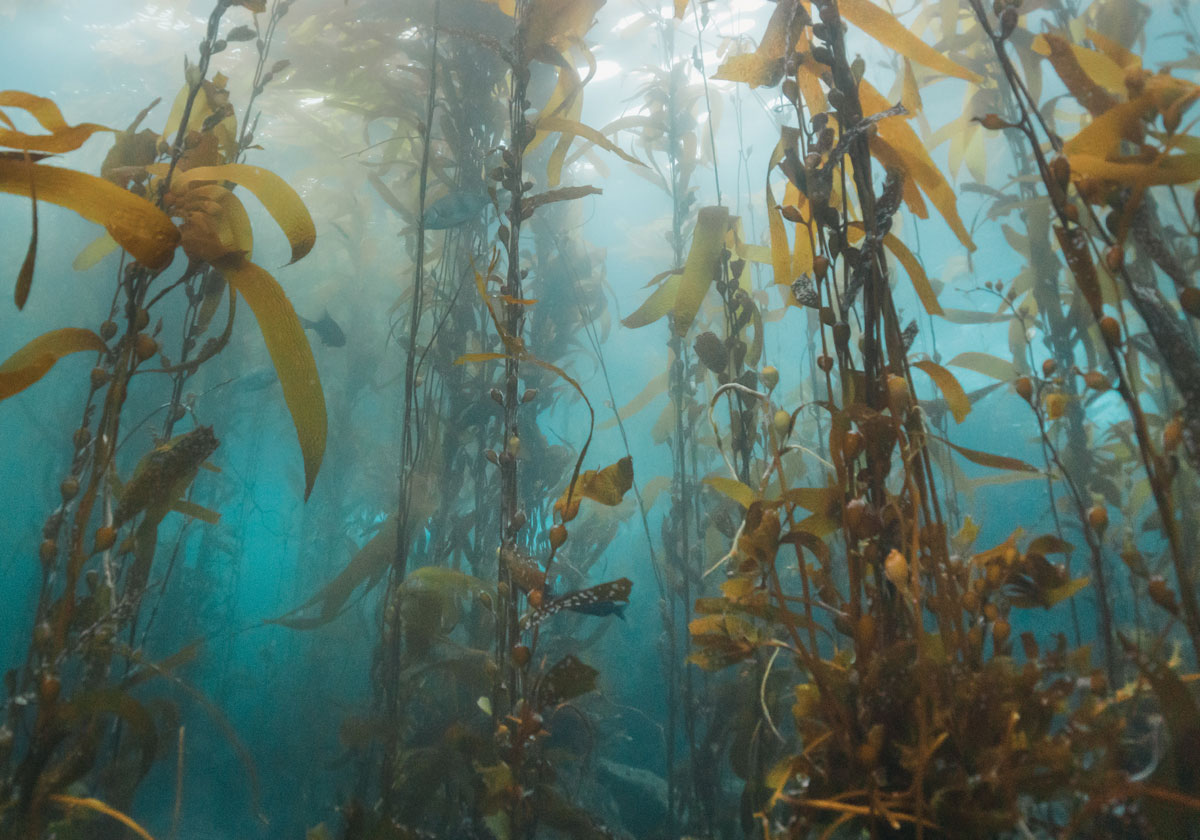
Bren: Can you change the emotional relationship to that? Seas rising, that’s just more fuckin’ farmland for me. That’s kind of mean to say and cruel. There’s going to be a lot of suffering, but like, I’m going to be stringing lines between the skyscrapers on Wall Street. My farms will get cheaper to do because those are existing anchor systems. Where does the CSF fit into this new food world? You’re starting a seaweed CSF. What do we call it?
Sean: Community Supported Kelp Crop. We’ve done more work and study and just spent years in studying the mechanics of Community Supported fill-in-the-blank as a model. Realistically, it doesn’t work. Can’t be scaled.
Bren: The way you’re telling this history of CSFs and CSAs, it’s fun, because you can see there is a history of soil and sea collaboration. At the water’s edge, those sweet waters, there’s just so much opportunity for innovation between land and sea in food systems. It’s just really exciting and you’ve been a part of that forever. I don’t know what that fuckin’ is, but a kelp club sounds fun.
Sean: The next phase after this, which you see me constantly lobbying and pushing for, is actually protecting these terms and language, almost from a legal perspective, because the next phase that we’re going to head into in about 18 to 24 months, is co-opting of this language by larger industrial food players. You will start seeing things like Community Supported Kelp Crop by Dow or Dole.
Bren: Yeah, or Trident.
Sean: Trident Seafood, exactly. And that will be right at about a two-year timeline from now. So it’s just interesting to have, this kind of like, I’m having déjà vu all over again.
Bren: This is why we need folks like you, Sean. I don’t know how this happened to us, but we’re the old guard now and we’re of less use every day as we get older. But at least we can tell the old history and the stories, right? Like, “Watch out for the sharks.” You know, your success will attract sharks, right?
Trident right now is permitting seaweed grounds in Alaska. Up until now, it’s all been local, small-scale fishermen. But we’ve de-risked the industry enough, so now Trident is like, “Oh, it’s time to come in and move.” So it’s happening and I think you’re right, they are just going to co-opt this entire dialect of climate cuisine and all this sort of stuff, they’ll take over and it’s going to be a nightmare. You mentioned aquaculture, and there’s kind of two camps out there. Aquaculture is all bad, which is the use of antibiotics, GMOs, fish escapes, huge corporations. Then you hear the aquaculture people saying, “All aquaculture is good because we’re going to need more food on the planet as the population goes up. We’re not going to have to get food from the sea and our wild stocks can’t handle that pressure.” So those are the two camps. I just would love to hear your view of the possible third way or whatever we want to call it. Is there some alternative to those, or even how you’re thinking about it in your mind? And it leads to shellfish and kelp probably, but just unpack the aquaculture debate for me and how you ended up here, because you’re pretty against aquaculture.
Sean: Oh, dude.
Bren: You are, right?
Sean: Oh, of course, man. But you’re right, the term aquaculture is a very broad word. Aquaculture and the concept of putting a fish in a pond and growing it. But what’s it coming to represent now? Industrial aquaculture, and specifically industrial finfish aquaculture, which is these penned cages and you just see globally nightmare scenarios. And I can go on for days about how dangerous it is. Anytime you’re creating a monoculture of anything, nature doesn’t like it. If you’re just growing one specific thing, and these monoculture industrial finfish, it’s hog farming at sea.
The word “regenerative,” that’s kind of the great dividing line in the aquaculture world. You’ve got extractive aquaculture, where there’s just basically pulling things out of nature and not replacing them. But regenerative—and I heard you say this years ago—we’re past the point of needing to find things that are sustainable. If we just find a place to sustain the track that we’re currently on, we’re doomed. We need to actually find a way to start restoring and healing and having a regenerative impact. And I think that’s really the kind of very clear dividing line that I’m using in aquaculture.
Dude, enough about the kelp, man.
Bren: There’s the fact that industrial aquaculture is extractive and polluting. One of the other concerns is that it is so capital-intensive. So you see like a consolidation of fish farms around the world massively, because it costs just a huge amount of money. So the one up in Maine that’s being created on land. So this is another thing. A lot of people are trying to do land-based aquaculture—which is a little crazy to me to grow seafood on land. But like it’s $40 million to set up a land-based salmon recirculating farm. It’s wicked expensive.
One of the qualities of regenerative, it doesn’t really cost much to build one of these farms. It doesn’t have to be massive, you don’t need investors, you don’t need massive corporations to do it. So it can be community-owned and governed. That’s part of regenerative. It’s not just the environmental piece. And I think industrial aquaculture does not benefit communities, which is huge. So tell me about the Eat More Kelp bonanza?
Sean: Eat More Kelp bonanza is a good way to put it. We’re going to have 60,000 to 80,000 pounds of kelp after this winter, 2021, basically, in the spring. So that work that you and I have been doing for years and kicking around ideas, sitting at the bar at Blue Hill and coming up with how do we get a community to support this? And we just went back into our toolbox and realized that we have everything that it takes to create the first Community Supported Kelp Crop that’s going to be Amagansett-grown and all local. We’re going to be landing it and processing and distributing it from Montauk.
We’re getting all the regulatory and legislation stuff pushed through and it looks to me like 2021 is going to be the year for kelp to really breakthrough in New York. So it’s exciting, dude. I go to bed thinking about this every night. I wake up first thing in the morning, it’s all I can think about.
Bren: If you’re going to bed thinking about kelp every night and waking up thinking about it, like good luck finding a girlfriend. You’re like the worst catch now. It just sounds like a terrible frickin’ dinner date.
Sean: Yeah, it’s all I talk about and all I think about. It’s like, “Dude, enough about the kelp, man.” All the constant kelp puns. “I get by with a little kelp from my friends.” People are like, “Dude, enough with the kelp.” I’m like, “Kelp me out, man.”
